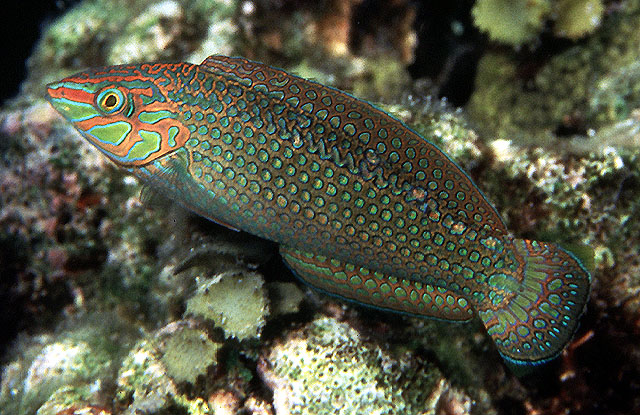| Labridae (Wrasses), subfamily: Corinae |
| 12 cm TL (male/unsexed) |
|
reef-associated; marine; depth range 1 - 15 m |
| Indo-West Pacific: Sri Lanka to Fiji (Ref. 9710) and Tonga (Ref. 53797), north to Taiwan, south to northern Australia. |
|
Dorsal spines (total): 9-9; Dorsal soft rays (total): 11-12; Anal spines: 3-3; Anal soft rays: 11-12; Vertebrae: 25-25. Young green when in seagrasses and greenish brown on reefs. Recognized by the unusual color patterns on the cheek or the black spotted scales over the back (Ref. 48636). Preserved male specimens with pale spots on scales; dark spot behind eye (continuous with a bifurcating dark band which extends ventrally); another on opercle; a dark band on snout from upper lip to eye; head with bands; spot on upper caudal base may be present or absent (present in females). Anterior lateral line scales with 1-3 pores (usually 2); 5-6 suborbital pores. Anterior dorsal and anal soft rays longer than posterior rays; pelvic fins of males relatively short, not reaching anus. |
| Found usually in groups (Ref. 90102) in shallow coastal reefs and seagrass flats (Ref. 9710), also in algae-rocky reef flats and lagoons (Ref. 48636). |
|
Least Concern (LC); Date assessed: 25 March 2009 Ref. (130435)
|
| harmless |
Source and more info: www.fishbase.org. For personal, classroom, and other internal use only. Not for publication.

